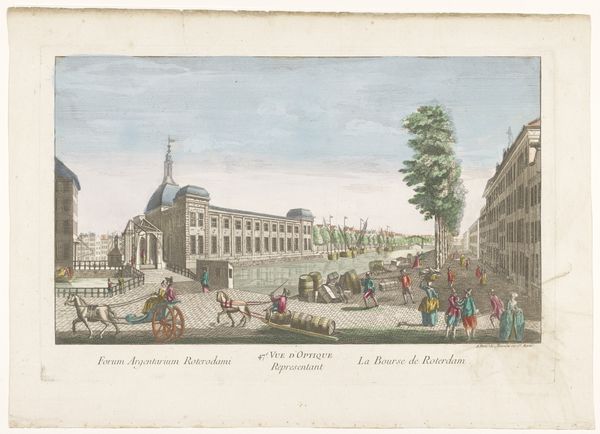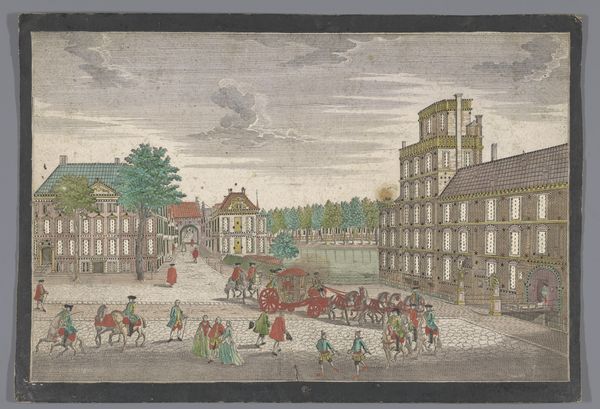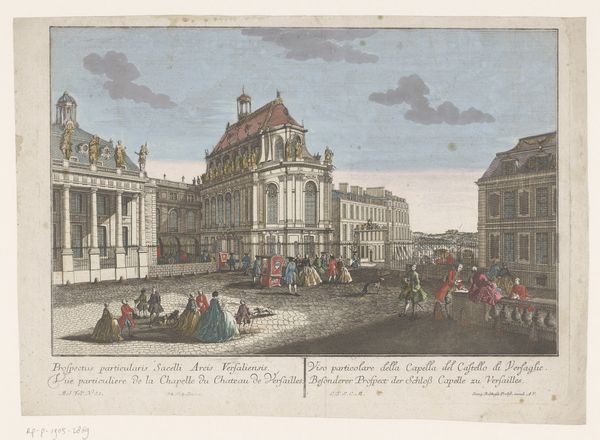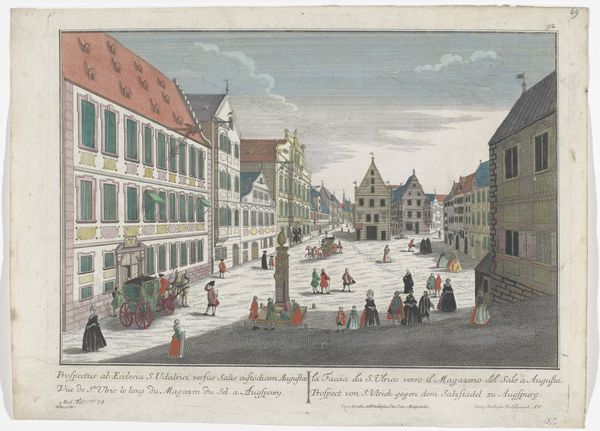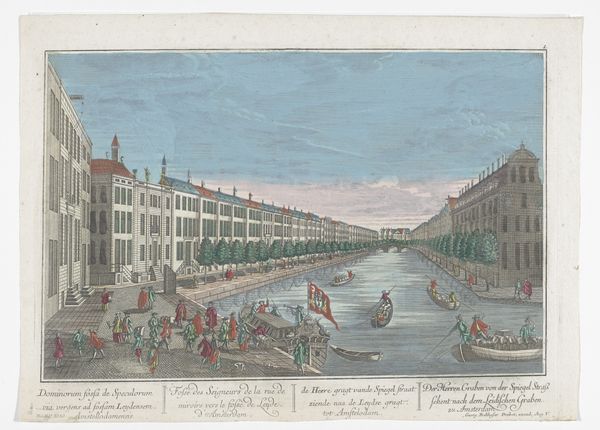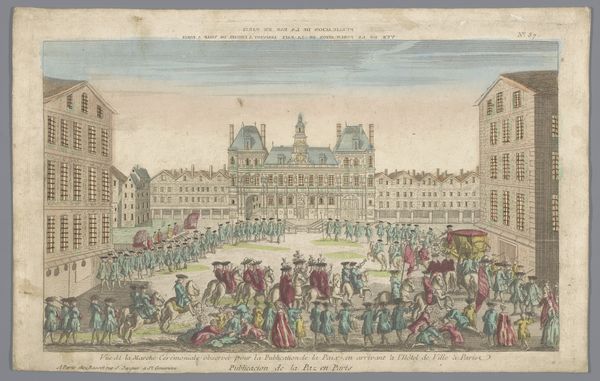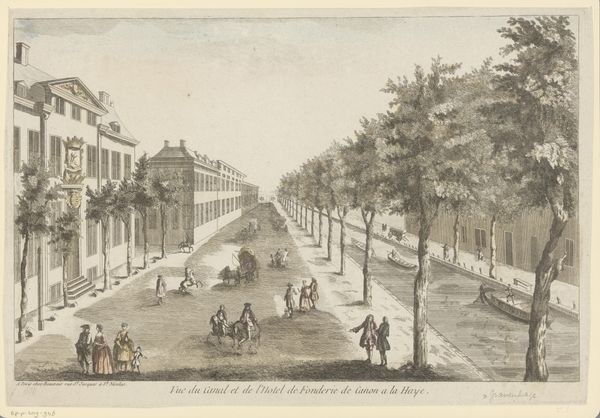
Gezicht op het Mauritshuis en de Hofvijver te Den Haag 1742 - 1801
0:00
0:00
georgbalthasarprobst
Rijksmuseum
Dimensions: height 302 mm, width 415 mm
Copyright: Rijks Museum: Open Domain
Curator: Welcome. Today, we’re looking at a fascinating print titled "Gezicht op het Mauritshuis en de Hofvijver te Den Haag" attributed to Georg Balthasar Probst. While the precise date of its creation remains broad, it's estimated to fall somewhere between 1742 and 1801. It’s a detailed cityscape, currently held at the Rijksmuseum. Editor: It immediately strikes me as quite orderly and reserved, despite the bustling street scene. The palette is restrained, dominated by muted greens, greys, and touches of red. There's a stillness, an almost dreamlike quality, despite all the activity. Curator: That sense of order is certainly intentional. Note the perspective, carefully constructed to emphasize the linear elements – the rows of houses, the road, the bodies of the carriages. The artist uses line work to create depth and structure to emphasize the balance of this bustling commercial district. The architecture appears formidable, asserting a strong visual language for viewers to take note of. Editor: I'm struck by the representation of class at play here. It seems like Probst positions The Hague as a stage on which to express social commentary. Notice the figures populating the scene. Each contributes in some way to The Hague. While those of nobility casually stride, a worker is actively pushing their goods to be sold in the district. Curator: Precisely. What is key here is the engraving itself as the chosen medium of Probst’s practice. Engravings are largely reproducible, which means Probst intended for his art to be accessible. As we continue to look through an intersectional lens, this further contributes to our contemporary reading. Probst intentionally provided snapshots into society while also granting us a means of engaging in conversation as we look into Dutch social practices during his life. Editor: I'm starting to view this engraving not just as a serene depiction of The Hague, but as a deliberate arrangement meant to capture an everyday look at Dutch society, complete with class commentary. Curator: It's remarkable how Probst manages to infuse so much structure with so many figures into the work. There’s an intentionality in its composition, that speaks to a very calculated awareness of Dutch social hierarchy at the time of creation. Editor: Indeed. Thinking about this work has deepened my understanding of how location influences artistry, especially in a city brimming with a rich political and social identity.
Comments
No comments
Be the first to comment and join the conversation on the ultimate creative platform.
